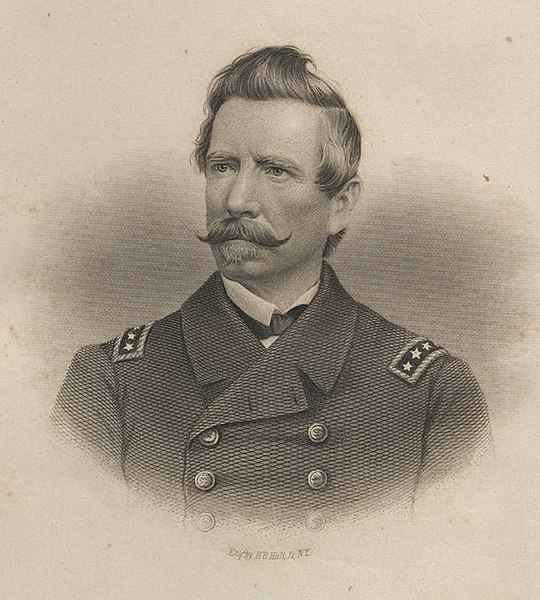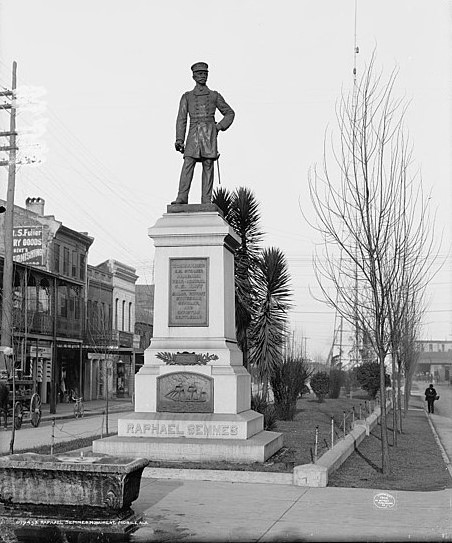Naval officer, b. in Charles County, Maryland, U.S.A., 27 September, 1809; d. at Point Clear, Alabama, 26 August, 1877. His family were descendants from one of the original Catholic colonists of Maryland, from which state he was appointed a midshipman in the U.S. Navy 1 April, 1826. He served until 1832, when he was given leave of absence extending until July, 1835, during which time he studied law and was admitted to practice.
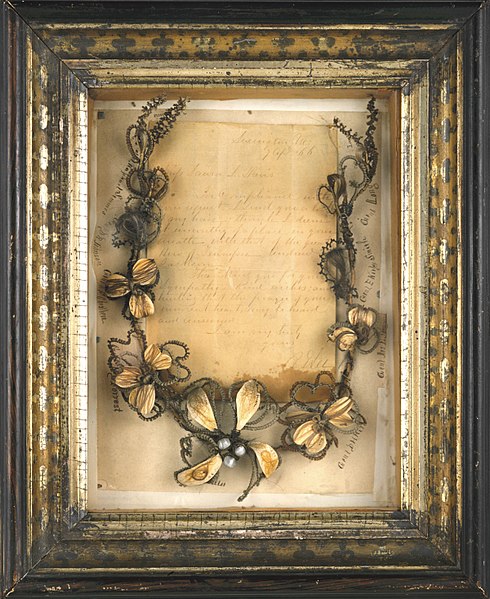
A very common site in American homes, hair wreaths. The locks [of hair] include those of Jefferson Davis, Adm. Raphael Semmes, Gen. Bushrod R. Johnson, Gen. B.F. Cheatham, Gen. Nathan Bedford Forrest, Gen. Robert E. Lee, Gen. Andrew Jackson, Gen. D.H. Hill, Gen. Joseph E. Johnston, Gen. E. Kirby Smith, and Gen. James Longstreet. The wreath surrounds a letter written in 1866 by Robert E. Lee to Miss Laura S. Davis, the wreath’s maker, replying favorably to her request for a lock of his hair. On display at the Missouri History Museum in St. Louis.
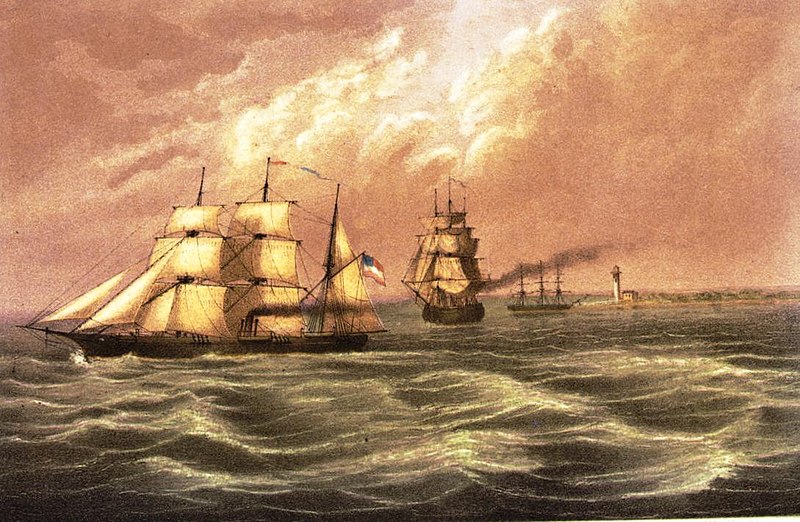
“The Sumter running the blockade of Pass a l’ Outre, by the enemy’s ship Brooklyn, on the 30th June, 1861.” Lithograph by A. Hoen & Co., Baltimore, Maryland.
As commander of the Confederate privateer Sumter he destroyed, during six months in 1861, eighteen ships, and the next year, taking command of the Alabama, he began the famous cruise during which he captured sixty-nine vessels and inflicted a blow on the sea-carrying trade of the United States from which it has not yet recovered.
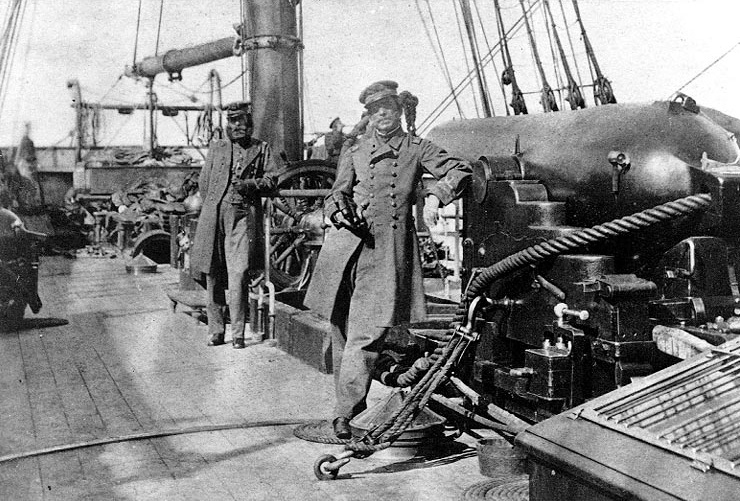
Captain Raphael Semmes, Alabama’s commanding officer, standing by his ship’s 110-pounder rifled gun during her visit to Capetown in August 1863. His executive officer, First Lieutenant John M. Kell, is in the background, standing by the ship’s wheel.
After the Alabama was sunk off the French coast by the Kearsarge, 19 June, 1864, he escaped to England, whence he later returned to Virginia and was engaged in the defenses about Richmond. At the end of the war he went to his home in Mobile, Alabama, and opened a law office. He also edited a paper, and for a time was a professor in the Louisiana Military Institute.
His destruction of the mercantile marine during his cruise in the privateer Alabama so embittered northern public opinion against him that, although he was pardoned with other prominent Confederate leaders under the amnesty proclamation of President Johnson, his political disabilities were never removed. He was the author of “Service Afloat and Ashore During the Mexican War” (1851); “The Campaign of General Scott in the Valley of Mexico” (1852); “The Cruise of the Alabama and Sumter” (1864); and “Memoirs of Services Afloat during the War between the States” (1869).
[Note: It is inaccurate to call the Sumter and Alabama “privateers”, as they were warships commissioned by the Confederate States of America.]FUREY in U. S. Hist. Soc. Records and Studies (New York, 1911); Morning Star (New Orleans), files; Nat. Cyclo. Am. Biog., s. v.
THOMAS F. MEEHAN (Catholic Encyclopedia)
